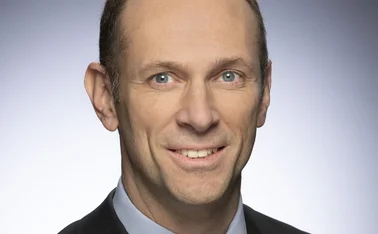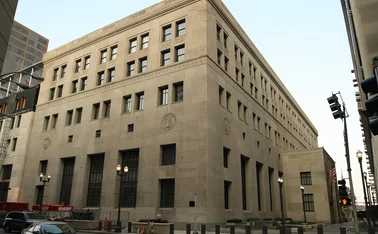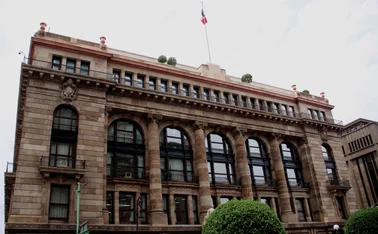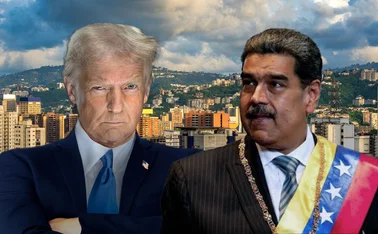
St Louis’s Bullard on the future of the Fed and its monetary policy record
President James Bullard says Fed monetary policy was a “factor” that fuelled crisis
Do you view the Fed’s policies, especially monetary policy, as at least partially responsible for fuelling the conditions that led to the Great Recession?
Relatively low interest rates were a factor during that period. I don’t know if they were a big factor, but they were a factor. While the relatively lax regulatory environment was probably the bigger factor – and that’s certainly been talked about ad nauseum since the crisis – you cannot completely absolve the monetary policy element itself. The Fed was, by all accounts, a little bit blind to what potentially could happen with the housing bubble and how serious it would be, including myself as a staffer. There were too many complacent stories being told around the Fed, saying: “Well, these prices look out of line, but they’ll probably just smooth out and the rest of the economy will catch up, and everything will be okay.” And that isn’t the way it turned out at all. An important conditioning factor was that the internet bubble burst in 2000 with relatively mild consequences, and because of that people got the idea – the Greenspanian idea – that you couldn’t predict bubbles and when bubbles burst, what you could do is simply clean up afterwards. The housing bubble showed that the clean-up was extremely severe, and maybe even caused permanent damage to western economies. This is causing central banks to recalibrate their thinking about asset price bubbles.
Do you think that if the Fed had ‘leaned’ heavily using monetary policy, it could have prevented the crisis?
Well, certainly if you are ‘Monday-morning quarterbacking’ [passing judgement after the event], as we say in the US. If you had known that something that serious was on the horizon, you would have played the cards much harder, and we might have had a recession earlier – but probably less severe, and one that the economy could bounce back from and get on the growth trend again.
There was quite a sharp public backlash against the Fed at the height of the crisis, and the reverberations are still being felt with the ‘Audit the Fed’ and ‘Choice Act’ efforts. How important was the Fed’s regional make-up – including the 12 regional reserve banks, such as St Louis – in addressing some of that criticism?
To understand the regional structure of the Fed, you have to understand the history. The Fed is the third attempt in the United States to create a central bank. The first two failed. Most famously, Andrew Jackson [US president from 1829–37] campaigned on eliminating the Second Bank of the United States. He ultimately was successful, and the US did not have a central bank from the middle part of the nineteenth century, all the way through the Civil War almost to the eve of World War I.
We could not have survived this crisis without the ‘Main Street’ structure of the Fed. If it had just been a New York Fed, and there was a bailout and all these things, the New York Fed would have faced a more severe backlash and possibly elimination
It was only the ‘Panic of 1907’, which was so serious and so severe, that even opponents of central banking threw in the towel, and they said: “We have to do something, but what is it that we can do that will keep a stable political backdrop for the central bank?” And they came up with the idea: “Well, across the country. We’ll give some representation to different parts of the country.” So it’s not just New York – or the east coast generally – that is making all the decisions. And that saved the Fed in this crisis. We could not have survived this crisis without the ‘Main Street’ structure of the Fed. If it had just been a New York Fed, and there was a bailout and all these things, the New York Fed would have faced a more severe backlash and possibly elimination – or at least very severe reforms. Instead, we have a more politically stable organisation with ‘Main Street’ representation.
What are the other roles that the St Louis Fed plays?
Originally, all the reserve banks were conceptualised as clones of each other, and they made monetary policy for each region. Almost as soon as that was set up, it became obsolete because financial markets started to unify across the United States. In more recent years, especially in the last 20 years, what we have done is specialise the banks into different activities. In St Louis, we lead what is called the Treasury function for the whole Federal Reserve System. The Federal Reserve Act says that the central bank can act as the fiscal agent for the US Treasury, and this means it is not at the policy level – it is more at the operational level. The Treasury can ask the Fed to do things and pay for it, and we run that for the whole Federal Reserve System. A lot of this is software and information technology for payment systems within the US, because the Treasury has a lot of payments that have to be made; have to be collected; have to be handed out; to be kept track of, all of these types of things. These systems need constant updating, need to become more efficient and save taxpayer money, and we do a lot of this work for them. A lot of that work occurs in St Louis, but we have sister banks that also help us. But we are the point bank for this business. This represents about a $650 million business right now.

You also play a role in promoting financial literacy. Why is that important?
We try to be a leader in economic education and financial literacy. We’ve tried to leverage technology. In economic education in particular, we created curricula that can be used in classrooms all across the nation – in fact, around the world. You can get a lot of reach through the internet that you wouldn’t be able to get if you were just going person to person. And we just recently had a million downloads of our curriculum. These go on various topics at various levels of economic education. A million downloads, and we think that we can get to 2 million fairly quickly. We live in a world that badly needs the basics of economic education and financial literacy – and, for various reasons, our educational structures just don’t provide it. So we’re trying to think of ways we can partner with educational institutions, and make it easier for them to bring in some economic thinking into their normal coursework.
You were a supporter of the first and second rounds of quantitative easing (QE). Why was QE a better policy than, say, negative rates or some other unorthodox monetary policy at the time?
The FOMC [Federal Open Market Committee] has considered negative rates. The feeling I had was a little bit ambivalent; I felt it was kind of a one-time policy in that yes, you could maybe go below zero, but there’s only so far you could go. Whereas, if you went with quantitative easing, you had more runway, and you could carry on the policy until you got the results that you wanted. So I thought QE would be a more powerful policy. There were – and continue to be – arguments: Does this change the microeconomics of the financial markets and disturb financial markets in ways that may be undesirable? So we were somewhat worried about that, as well. Taken together, I argued against negative rates and in favour of quantitative easing instead.
Why did the Fed end up buying so many mortgage assets? And why did you support the extension of the Fed’s mortgage-backed security purchases in 2009?
There has been a long debate within the Fed about whether purchases should all be Treasuries or should be Treasuries and mortgage-backed securities. Some people, such as my former colleague Charlie Plosser, felt that you did not want to get into mortgage-backed securities because you were favouring a particular market over other markets. By staying in Treasuries, these were general-purpose securities that lots of people used, and they affected the general level of interest rates, so you didn’t really have to go in and specialise. But there are counterarguments to that. The GSEs [government-sponsored enterprises] were nationalised, anyway, and the Treasury was backing all the debt of Fannie Mae and Freddie Mac, and so weren’t these really public securities, anyway? The other aspect was that the crisis itself was a housing crisis, and the whole idea was to restart housing markets and housing finance, in a way that would support a recovery. And that is where we ended up on that debate.
Why would you have voted against QE3 if you were a voting member of the FOMC at that time? Was it an issue to do with the policy or something to do with timing?
The evidence for QE2 – especially in retrospect, but at the time, as well – was very powerful. QE2 was deployed as US inflation hit its lowest point during this whole period – and it was going down. To me, it was a situation where we really needed to do something to turn that around. And, in fact, QE2 did turn that process around, and inflation came back up during 2011 and actually hit the target in 2012. People forget that core inflation was 2% at the beginning of 2012. For QE3, the data was less clear, and I didn’t think at that point that we really had the case to go to a really big QE programme. In retrospect, it worked out pretty well, but at the time, I just didn’t feel like we really had the same case that we had for QE2.
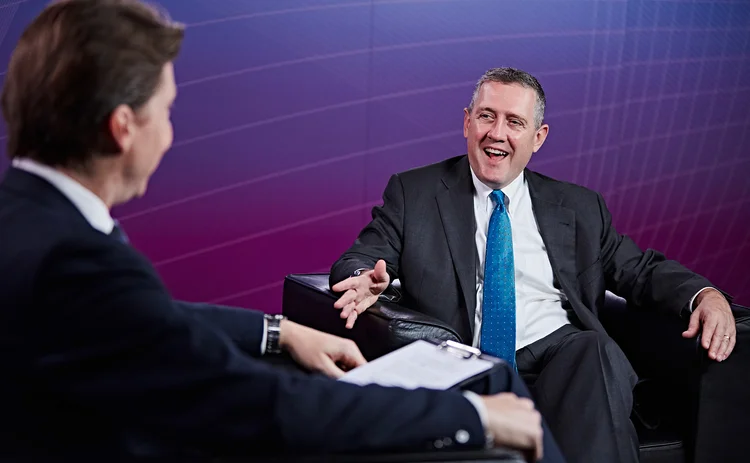
How do you interpret the so-called taper tantrum in 2013? It seemed to come after the first clear signal was given that the Fed was considering moving from a very expansionary policy. It was a trigger point that resulted in many carry trades being unwound. Do you think it was caused more by the build-up of portfolio positions or was it a big miscommunication by the Fed?
My view on the taper tantrum is that it was a communications problem, and not a problem of actual policy. The FOMC at its June 2013 meeting did nothing as far as actual policy, and we didn’t change the statement very much. What we did is we sent chair Ben Bernanke [2006–14] out to the press conference to explain to the world how we were going to possibly handle the future of our quantitative easing programme. This was very unsettling for markets. We didn’t have a detailed plan to give them. We didn’t have actual dates to give them, and the markets were thinking that we were going to continue [QE] for quite a while, and we basically said: “No.” And the other thing about that meeting was that it came as we were downgrading our forecasts for US output. So why were we talking about possibly tapering in a situation where we thought that outlook was worse than we had previously thought? All those things together made for a bad combination, and I dissented at that meeting on the dovish side, saying we shouldn’t have done that.
Now, as it worked out, in September of that year, we surprised markets again by actually going the other way and being more dovish than they expected. And then when we actually tapered in December 2013 – actually made the decision and went ahead with it – then nothing happened in the financial markets. So, to me, the lesson is that it was all about what was the market expecting versus what the chair, in particular, and the committee was thinking. It was a mismatch, and we didn’t handle that very well during the summer. The actual policy came off without a hitch in December, and we actually tapered all the way through 2014 and stopped our purchases altogether in October of 2014.
How do you assess the Fed’s efforts to meet its inflation target? Is it symmetric in its approach? And why did you not support the statement on longer-run goals and monetary policy strategy?
Some of the language in the statement wasn’t really an appropriate way to describe the symmetry. But the symmetry itself, I do back – and I’ve always felt like the inflation target was symmetric. Sometimes you’d be above, sometimes you’d be below. That’s just because it’s an uncertain world and a stochastic world, and these things are bouncing around, and that’s natural. So I’ve never felt like it’s a one-sided story. In global markets, there is a very big central bank where it is a one-sided story, which is the European Central Bank, where they say 2% or below. But for the US, for the theories I work with, the models I work with, it’s always a symmetric thing, so being at 2.2% inflation is not any different than being at 1.8%. So I backed the symmetry aspect.
Why do you believe the Fed should focus more on headline, rather than core, inflation?
The official target is in terms of headline inflation, and I am often admonishing people not to lose sight of that. It’s very tempting when you’re analysing inflation day to day to get rid of the noise. You want some kind of measure that takes account of the signal-to-noise ratio, and that’s a natural thing. But then it can’t become that the whole target is some kind of core measure or trend to mean measure, which is my preferred way to do it. The goal is to keep the headline inflation close to 2%, and it’s very important for communication to the average member of the economy, because the typical person’s market interactions are mostly related to going to buy groceries and gasoline. That is where they get their measure of prices on a day-to-day basis, and if you start telling people “oh, we don’t care about those prices”, it’s very damaging to the credibility of the committee. If you don’t care about those prices, then what the hell prices do you care about? Because these are the ones people are seeing every day. They know that the basket is bigger than that and there’s all kinds of other goods. But to exclude those prices when you’re trying to talk about the inflation target is a mistake.
Do you think the interests of the US would be better served if the Fed just had one mandate, an inflation target, and the employment mandate was scrapped?
I’ve supported this because I think it would clarify what monetary policy can do over the medium term. The consensus in the profession is that you can control inflation over a multi-year period, and this is what the central bank should ultimately strive to do. We understand that there are implications for the real economy and that we’re going to react to developments in the real economy as we do that. But it’s better off from a rhetorical point of view if you focus on inflation as the primary goal. Also in Europe, the goal is inflation. In the US, you’ve got a dual mandate, but when I see analysis of Europe and analysis in the United States, the models are exactly the same. So I think the actual analysis and the actual inputs into policy would not change at all. So the only reason I’m for this is because it clarifies what monetary policy can do over the medium to longer run.
Inflation has not been all that far from 2% in the United States since 1995, and the central problem has been that financial market excess of one type or another has developed, and when those bubbles burst, we’ve had recessions
You mentioned earlier that an eye needs to be kept on asset prices. Should there be some factor of asset prices that’s brought into policymaking?
This is the question of our time. For the last 25 years in the US, the problem has not really been a Volcker-type problem, where inflation gets out of control and somebody has to come in and get it under control, and then you have to go off into the future from there. That’s not really been the world that we’ve lived in. Inflation has not been all that far from 2% in the United States since 1995, and the central problem has been that financial market excess of one type or another has developed, and when those bubbles burst, we’ve had recessions. It’s very hard to model something like that, but if you look at the last 25 years, that’s what has happened. And so you can’t be blind to that by always referring to the 1970s, or four recessions in 13 years and double-digit unemployment plus double-digit inflation at the same time. That was a different era than the one we’re in now. So I’m sympathetic to looking at asset bubbles, but I just don’t know that we have great models of it at this point.
Do you believe there is additional pressure for the FOMC to act during meetings that are followed by a press conference (half of the eight annual meetings)? Is that why you called for all eight meetings to have a press conference?
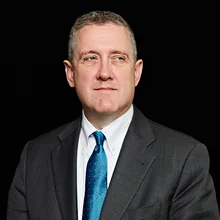
I feel pretty strongly that all meetings should have a press conference. All meetings should be ex-ante identical, and it would give the committee the option to do what it felt it needed to do at a particular juncture – that’s the way monetary policy should operate. Other central banks have press conferences associated with each meeting. The way we’ve got it now, it essentially means we can only make a major decision on four days out of the year, and that’s very restricting. It also means that sometimes the central bank then makes a decision on a day when the recent data has actually not supported that particular decision. But because we feel like “well, if I don’t do it today, then I’ve got to wait quite a while”, we’ve pushed ahead – and that causes confusion in the markets, where people ask: “Well, why are you doing it, if the data is not supporting you?” If you want to have a data-dependent policy, which I believe is appropriate, then every time you meet, it should look the same. It should be that you could make a decision there, if the committee judged that it was an appropriate time to do so.
Is eight times the right frequency?
Eight times is about right. Twice a quarter makes sense to me for the pace at which things change in the economy – the rate at which data comes in. Especially during crisis times, like what we went through in 2007 to 2009 and beyond, we had many other meetings in between those meetings, and we can do that, as well.
Why do you believe the US output gap is not as large as many claim? What are the implications for monetary policy?
I’ll give you a wonky response. For a lot of people, if unemployment is high, and it used to be low, then that means the output gap is high. If you look at theories about how the economy works, it’s supposed to be what is the actual level of output compared to the level of output that would exist if all prices were flexible. That’s a very different concept of what the output gap is, and what we should be looking at when we’re thinking about the distortion in the economy that we’re trying to fix. Central bankers have steadfastly refused to take that interpretation and to run with it, and then that creates some distance between our models and what we’re actually doing, and it makes me worried that maybe we’re not doing the right thing.
So, to give you an example, during the financial crisis, unemployment shot up in the US, and people said the output gap was huge. But even if prices were perfectly flexible and you got a big shock, output would tumble then, as well, and unemployment would go way up. So the question was: how much worse were we under sticky prices than we would have been under flexible prices, and how much are we trying to stabilise that gap? This is a million miles from the way monetary policy is typically talked about and analysed at the policy level. But part of my agenda is to get the theory and the policy, and force them to come closer together and make contact – and not let people just tell stories, because they like to tell certain stories.
What is the correct sequencing for a normalisation of Fed monetary policy, including reducing its $4.5 trillion balance sheet? The Fed has raised rates by 75 basis points already – is it time to end reinvestments?
Starting last year, I adopted a regime-based view of the US economy. Before last summer, the St Louis Fed kept predicting that growth was going to be 3% any minute now and inflation was going to go up 2% or even exceed 2%. And after a couple years of forecasting that and having it not materialise, we decided to throw that model out because empirical evidence wasn’t supporting it. We replaced it with a new regime-based concept, where 2% growth is the norm. And we don’t see any reason that the economy’s going to deviate from that 2% – there are no more cyclical dynamics in the economy, the shock is too far in the past now. So you’re at 2% growth and inflation is coming up to 2%, but just barely, and we don’t expect really any change in this environment for the forecast horizon – the next two years or so.

We think the level of the policy rate is about right for this kind of environment. If we just left the policy rate where it is and nothing else happened in the economy, we would have inflation at about 2% or just under, with unemployment and output growth staying at similar levels to today. In terms of normalisation, there is nothing to do in terms of the policy rate. The other thing is the balance sheet policy. Maybe it’s time to get going on reducing the size of the balance sheet, in order to provide more policy space in the future, in case we’d want to do quantitative easing at some point because some future shock sends the economy down again. It’s prudent to create that policy space while we can. And I’m pleased with the plans that the committee has put in place to allow reinvestment to end – perhaps sometime this fall, on a very limited basis – and then get to the full end of reinvestment some quarters in the future.
These regimes involve a combination of recession or no recession, high or low productivity growth, and high or low real returns on short-term government debt – is that right?
That’s right. To simplify, just think of a high-growth regime and a low-growth regime. We’re in a low-growth regime by US standards, and that will also affect the real interest rate itself. When you are thinking in terms of regimes, you have a high mean [growth] with some noise around that and a low mean [growth] with some noise around that. So, right now, we’re taking draws from the low regime, and then what you should do is run monetary policy, given that you’re in this low regime. You understand that it could switch to the other regime, and if that occurs, you’re going to have to make monetary policy for the high-growth regime, and you’re going to have to react.
But, for the purposes of the next two years, we can’t really predict any switch like that. There are some things out there that might make a switch, but we can afford to wait and see if those things happen – and so we’ll make monetary policy given that we’re in a low-growth regime. So now you’ve got these two means, and you’re possibly switching between these two mean growth rates. It’s inappropriate to say: “Well, what’s the long run?” Well, the long run is some average of these two growth rates, but this is a growth rate that you never see, because it’s not the low one and it’s not the high one. So it makes you think differently about the long run. What do you mean by the long run if you’ve got two possible means?

As they’re discrete, how do you get the shifts between the regimes? Can monetary policy have an impact?
No. The way we’ve described it is that is it’s very much an exogenous kind of thing, and in the literature it’s a statistical thing, so it just happens randomly. But in the real world, there are factors that could switch you to the high-growth regime, and the incoming Trump administration has been thinking about some of those. They want to do tax reform because they think that will lead to more investment and more productivity growth. That’s a great example of the kind of thing that could at least potentially switch you to the high-growth regime if executed properly. Monetary policy can’t do that because we can’t change the taxes, and so on. That’s probably a real-world example of something that could happen. But, there again, is that really going to happen over the next two years or not? And you’ve got to get into the political probabilities around that, as well as the actual details of a possible tax change.
What were your thoughts about the resignation of the Richmond Fed president, Jeffrey Lacker? He was initially probed by the Fed in 2012, there was a subsequent investigation that involved the FBI and other agencies more recently, and then he resigned. Do you think he should have resigned? If so, should he have gone earlier?
We don’t really have that much public information about this because it was between his attorney and the [Court for the] Southern District of New York, and they really didn’t say very much about it, or release very much information other than Jeff’s statement on the day of his resignation. That’s really all we can go on at this point, and it’s pretty thin as far as details about what happened. I just don’t know because I don’t have much in the way of what they were thinking and what was being talked about there.
Where do you sit in terms of this debate about increased rules versus increased discretion for the Fed? There’s obviously this effort to ‘Audit the Fed’, which is not akin to an accounting firm going in and doing an audit. It’s really about creating monetary rules that perhaps give lawmakers a better opportunity to hold the Fed to account. Others would say it will politicise monetary policy decisions. What is your view?
I am in favour of rules-based policy, and it would be natural for the Fed to report monetary policy outcomes in comparison to rules. We already do this. Ben Bernanke, [current Fed chair] Janet Yellen and many other members of the committee have given long speeches where they talk in detail about possible policy rules and what those policy rules might imply for policy in the future or currently. And so it’s part of the fabric of how we talk about monetary policy today in academic and policy settings. In that sense, [Stanford University professor of economics] John Taylor has been wildly successful in influencing the discussion on monetary policy. At a practical level, we could have a quarterly monetary policy report, and in that monetary policy report, we could say: “Well, here are some rules that are often talked about, here’s what they would prescribe for policy, here’s where the committee actually is. The deviations are because of these factors that aren’t in the model, and this is what the committee is thinking.” That would be just a helpful way to frame the debate and talk about the debate. I don’t think it means it would be a slave to a particular policy rule or anything like that.
I don’t think Congress really wants to politicise interest rate decisions because it’s better for them to leave the interest rate decisions to the committee, and then they can complain about the decisions from the outside
The ‘Audit the Fed’ is a little bit worrisome, as you’ve got the potential that a rogue member of Congress or an individual member of Congress of either party could order an investigation into the latest decision on interest rates or something, and maybe call hearings or get the Government Accountability Office to produce some report or something. That to me sounds like politicising the interest rate decisions. Actually, I don’t think Congress really wants to politicise interest rate decisions because it’s better for them to leave the interest rate decisions to the committee, and then they can complain about the decisions from the outside. This is much better from a political office-holder’s point of view, rather than to have the actual decision laying with them, and then they have to go campaign to their voters about why they raised interest rates or whatever. So I think our current system actually works pretty well. If we got better communication through this quarterly monetary policy report, that might give more satisfaction to politicians that we’re being more accountable and more transparent about policy.
How do you view the Financial Choice Act, which has passed the House and could pass the Senate, given a few changes? What is your view on that?
The Choice Act is a big piece of legislation. It has many things in it, and we could probably talk all day about it. There are some things in it that are very reasonable, and other things that I have more trouble with. My ‘big-picture’ comment is that, to the extent we can get regulatory relief through this bill to community banks, that would be a plus. In the US, there are these very large banks, and Dodd-Frank was really written with the very large banks in mind. And, today, we have recapitalised those banks – they’re much healthier than they were at the time of the crisis – and a lot of people think: “Well, we want those rules in for those very large institutions.” I generally would agree with that. But then you’ve got thousands of smaller banks with a really different business model, and I think that’s been hard to get across to the general public. These smaller banks didn’t really have anything to do with the crisis, but the rules that came in under Dodd-Frank rained down on them. These smaller banks picked up fixed costs, which are probably being passed on to their customers, and they feel put-upon about this. They are worried about their future business model – and I am, too, a little bit. So, if we get some regulatory relief to that segment, it would be a major accomplishment for the US economy and for the communities that depend on these smaller banks.
These smaller banks didn’t really have anything to do with the crisis, but the rules that came in under Dodd-Frank rained down on them. These smaller banks picked up fixed costs, which are probably being passed on to their customers, and they feel put-upon about this. They are worried about their future business model – and I am, too, a little bit
Even during the crisis, we had a good regulatory regime in place for smaller banks. We were able to, if they got in trouble, downgrade their ratings. And then if they were in a lot of trouble, we shut them down. And that worked fine, even during the crisis. So, the regulatory regime that we had in place for smaller banks was fine. Dodd-Frank was really for the largest institutions. I do not know how this would get accomplished, but it would be a good thing.
Are you concerned that the Fed doesn’t still have sufficient powers to tackle a similar build-up of problems as we saw in the lead-up to the financial crisis? Is there a reputational risk that people will think the Fed would be there to sort these problems out, but it couldn’t?
When this comes up, people immediately start talking about macro-prudential policy. But the actual macro-prudential policy tools in the hands of the Fed are very limited, and so I don’t really think – when you’re talking about the US, anyway – that you should be thinking: “Oh, the Fed can do this or that to prevent financial market excess.” And I do worry about that for a future crisis.
Are you also concerned about the composition of the Federal Reserve Board into 2018? There are currently a number of vacancies, with Daniel Tarullo resigning recently, and both Yellen’s chair and Stanley Fischer’s vice-chair roles running out in the first half of next year?

I’ll say three things about this. First of all, it’s a big committee and that means you have people that can provide a lot of continuity and a lot of institutional memory on why certain decisions were made, and what direction future policy can go in. So, in that sense, there is natural continuity at the Fed, even when there are some key positions coming open. I also think that the list of potential nominees that has been circulated – which is Randy Quarles, Marvin Goodfriend and Bob Jones – is a very respectable group. And to the extent that is indicative of the kind of appointments the Trump administration is thinking about for the Fed, it argues for a lot of continuity. Finally, I don’t know what the White House is going to do about the chair position, but the fact [is] that they’ve hinted that Janet Yellen could be reappointed – irrespective of whether you think that’s going to happen or not, and I have no insight into it. But it does signal, at least from a monetary policy perspective, they think monetary policy has been okay or about right. That suggests that whoever they appoint would continue with more or less the same type of policy. And so that, again, argues for continuity, and they’re going to do something that is going to keep the general thrust of monetary policy going in the same direction.
Do you think it’s fair that the St Louis Fed has the same voting rights (by sitting on the FOMC once every three years) as the San Francisco Fed, which represents a much larger economy?
If you want to think about redoing the voting, New York votes at every meeting. California votes once every three meetings. And part of the original issue about setting up the Federal Reserve was that we wanted the representation from around the country, and you did not want to give the east coast over-representation. You could think of systems that would rotate, let’s say, every other year, including New York. That would be one way to handle things. Another issue is that the board itself, according to the act, is supposed to represent different parts of the country. That was part of the original compromise. But the actual representatives on the board are only tangentially related to different parts of the country. Many of them have been in Washington, DC, or on the east coast for many years, so there’s kind of over-representation of the east coast on many dimensions. New York gets to vote all the time, the governors tend to come mostly from the east coast – although Janet Yellen’s from San Francisco. But if you wanted to spread that out, you could have more militant enforcement of the idea that no two governors can come from the same part of the country.
Are Fed officials concerned that – at least, until very recently – there haven’t really been many signs of monetary tightening emerging in the UK (despite having higher inflation than the US), the eurozone or Japan? Will that restrict the Fed’s abilities to normalise rates?
I have wondered about this myself whether the US can go it alone in trying to normalise monetary policy. It looks like normalisation in Europe is a long way away, and probably in other countries, in Japan and possibly the UK, as well. So how far out in front of this process can the US really get? The answer is that the US can go it alone, and certainly has in the past, but only if there is really strong data in the US that really justifies the policy – growth clearly above 2%, inflation clearly at or above 2% and heading higher. Those kinds of things would definitely argue for interest rate increases in the US. But, so far, we really haven’t seen that so far this year. The growth trend still seems to be at about 2% – maybe just slightly above – and the inflation numbers have actually disappointed to the downside, and inflation expectations have come down. So we made three moves in December, March and June, in an environment where the data is not really screaming for this type of normalisation.
James ‘Jim’ Bullard is president and chief executive of the Federal Reserve Bank of St Louis. He oversees the activities of the Eighth Federal Reserve District, including operations in the St Louis headquarters and its branches in: Little Rock, Arkansas; Louisville, Kentucky; and Memphis, Tennessee. He also participates on the US Federal Reserve Board’s Federal Open Market Committee.
Bullard joined the Federal Reserve Bank of St Louis in 1990 as an economist in the research division. Prior to becoming president in 2008, Bullard was vice-president and deputy director of research for monetary analysis.
Bullard is an honorary professor of economics at Washington University in St Louis, a member of the Greater St Louis Financial Forum, the St Louis Regional Chamber’s board of directors, the University of Missouri-St Louis Chancellor’s Council, the St Cloud State University School of Public Affairs advisory council and the Central Bank Research Association’s senior council. He is also chairman of United Way’s US board of trustees.
A native of Forest Lake, Minnesota, Bullard received his doctorate in economics from Indiana University in Bloomington. He holds BSc degrees in economics and in quantitative methods and information systems from St Cloud State University, Minnesota.
The text version of the studio interview with James Bullard on June 30 contains some light edits.
Only users who have a paid subscription or are part of a corporate subscription are able to print or copy content.
To access these options, along with all other subscription benefits, please contact info@centralbanking.com or view our subscription options here: subscriptions.centralbanking.com/subscribe
You are currently unable to print this content. Please contact info@centralbanking.com to find out more.
You are currently unable to copy this content. Please contact info@centralbanking.com to find out more.
Copyright Infopro Digital Limited. All rights reserved.
As outlined in our terms and conditions, https://www.infopro-digital.com/terms-and-conditions/subscriptions/ (point 2.4), printing is limited to a single copy.
If you would like to purchase additional rights please email info@centralbanking.com test test test
Copyright Infopro Digital Limited. All rights reserved.
You may share this content using our article tools. As outlined in our terms and conditions, https://www.infopro-digital.com/terms-and-conditions/subscriptions/ (clause 2.4), an Authorised User may only make one copy of the materials for their own personal use. You must also comply with the restrictions in clause 2.5.
If you would like to purchase additional rights please email info@centralbanking.com test test test

